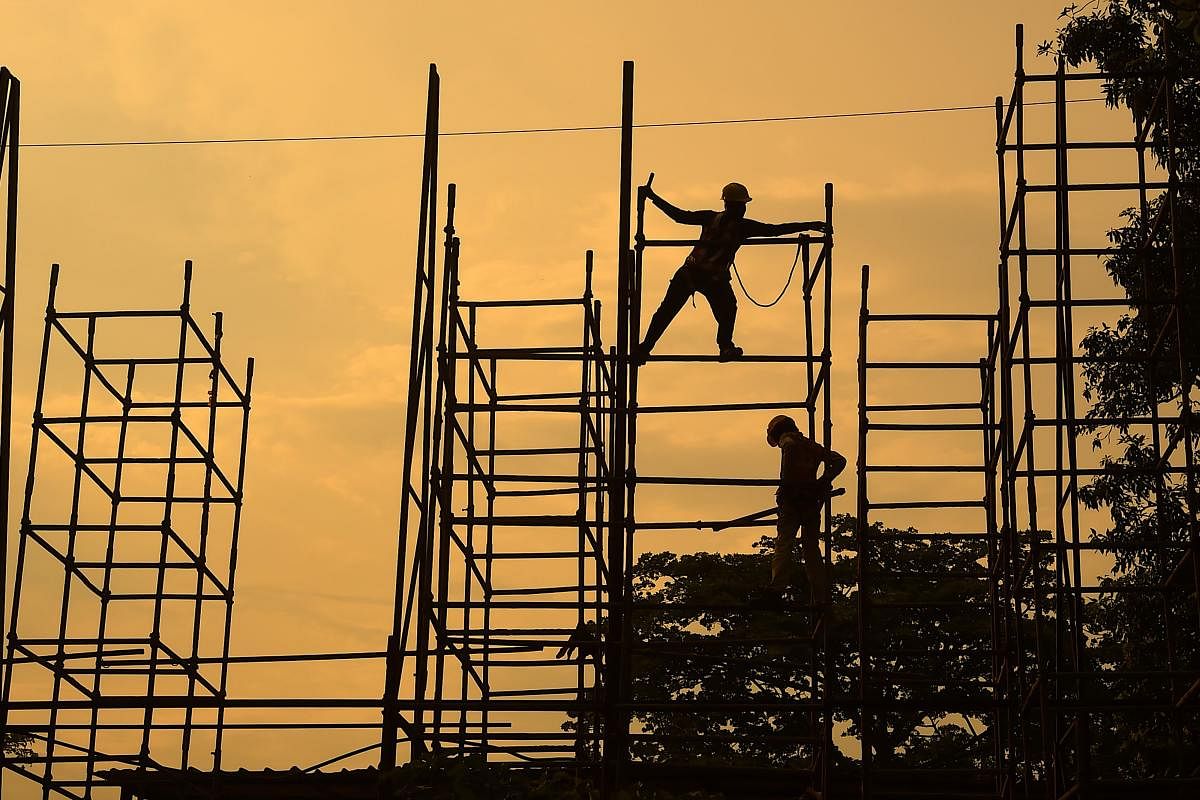
Prime Minister Narendra Modi recently asked the country to become “Aatmanirbhar” or self-reliant. But the over 90% informal workers in the country, up to 50% of the migrants in cities, were already “Aatmanirbhar”, finding their own means of livelihood, surviving on minimal wages, making do with inhumane housing, and scrimping to subsist on meagre pensions in their old age.
The sudden lockdown destroyed their “Aatmanirbharta” and made them dependant on doles from others. Studies have shown that 42% of migrant workers had no rations, and 33% were stuck in cities without food, water and money. As the PM desired, the migrants decided to become “Aatmanirbhar” again by depending on their own feet to carry them even 1,000 km back home.
A Central minister, questioned about the poor reach of relief materials to many, said recently that “if someone is not registered in government databases, we cannot provide benefits to them”. But where are the databases?
The NGOs trying to help the needy in Bengaluru lamented that “BBMP officials did not have a database of the needy and even when NGOs gave it to them, many officials did not act on it to deliver benefits”. The Karnataka High Court too kept questioning BBMP on its lack of an “organised and systematic” manner of distributing benefits, and based on an email from CIVIC, ordered the constitution of Ward Disaster Management Cells in all 198 wards, which BBMP had failed to constitute, though Ward Committee Rules mandated them.
Inter-state migrants especially are being denied benefits due to their not being registered under the Inter-State Migrant Workmen’s (ISMW) Act. Under Karnataka’s Rules of the ISMW Act, the employer has to maintain a register and submit the list of workers, their address, telephone number etc, to the registering officer, while applying for registration of the establishment, which is mandatory.
Despite these provisions, why did the registering officers not have a database of these lakhs of migrant workers, who became visible only when they started walking thousands of kilometres along the highways?
It is also apparent that many of these workers were trafficked and were working in bonded labour-like situations. But there is no system of inspections by a labour inspector to identify bonded labour under the Bonded Labour System (Abolition) Act (BLSAA). The only mechanism foreseen in the BLSAA is that of Vigilance Committees, which are supposed to conduct surveys of bonded labour.
But shockingly, no such survey has been conducted since 2012 in Bengaluru. The principal secretary of the Panchayat Raj Department of Karnataka wrote to Deputy Commissioners recently pointing out that Vigilance Committees had not been constituted in several districts, or had not met at all for long periods. So, in this situation, who is identifying the existence of bonded labour in the labour camps of these metros?
The Unorganised Workers’ Social Security Act (UWSSA) also requires unorganised workers to register themselves through a self-affidavit with the district administration. The district administration can entrust the task of registration of workers to the local authorities - panchayats or municipalities.
The state government is also mandated under the UWSSA to set up as many Workers’ Facilitation Centres as necessary to assist workers to register themselves. Despite the above provisions, how is it that neither the district administration nor the panchayat raj institutions/municipalities have a data-base of the unorganized workers in an area?
Construction workers
Though the state has about one crore unorganised workers, only 89,000 have been registered under the UWSSA as per data revealed after the lockdown. This led Chief Minister Yediyurappa to ask the Labour Department to hasten registration of all unorganised workers and provide them benefits.
In the case of the Building & Other Construction Workers’ Welfare (BOCWW) Act, there were reports that there are 21 lakh registered construction workers in the state but after the lockdown, statistics reveal that only 12.4 lakh workers were given the benefit of Rs. 5,000. The lockdown also revealed that there are lakhs of construction workers who are not registered who did not receive the Rs 5,000.
How do we overcome these deficiencies? In many other countries, it is mandatory for every citizen to be registered with the community/municipal office in the area s/he is a resident in, and any change in his/her location has to be informed to the authorities. So there are continuously updated lists of all residents in an area.
The time has come to make this mandatory in our country also, of course with adequate safeguards for data privacy. With a population of 1.35 billion, it is difficult to reach benefits to all the needy without these data-bases. We need to have decentralised, digitised databases maintained by the local authorities at the panchayat/ward offices, with a separate register for temporary migrants.
In other countries, these data-bases also serve as the bases for electoral rolls, the birth and death registry, compulsory schooling of children, for employment, etc. in the GP/ward.
The responsibility for identifying bonded labour needs to be shifted in our state from the revenue to the labour department, as practised in several other states. But given the manpower shortage in the Labour Department, there is a great need to enhance it by having Labour Cells/officials in every GP/Ward which not only maintain the databases of workers, but also enforce labour laws, report bonded and trafficked labour, and monitor the living and working conditions of the workers in the GP/ward, whose deplorable conditions have been exposed during the lockdown.
The ward committees in urban areas need to be designated as task forces to assist the Vigilance Committees under the BLSAA, as already notified for the panchayats, to continuously monitor conditions of labourers in the ward.
Is it time to realise that the ‘Aatmanirbharta’ of our informal workers cannot be a substitute for the government fulfilling its obligations to them?
(The writer is Executive Trustee of CIVIC Bangalore)